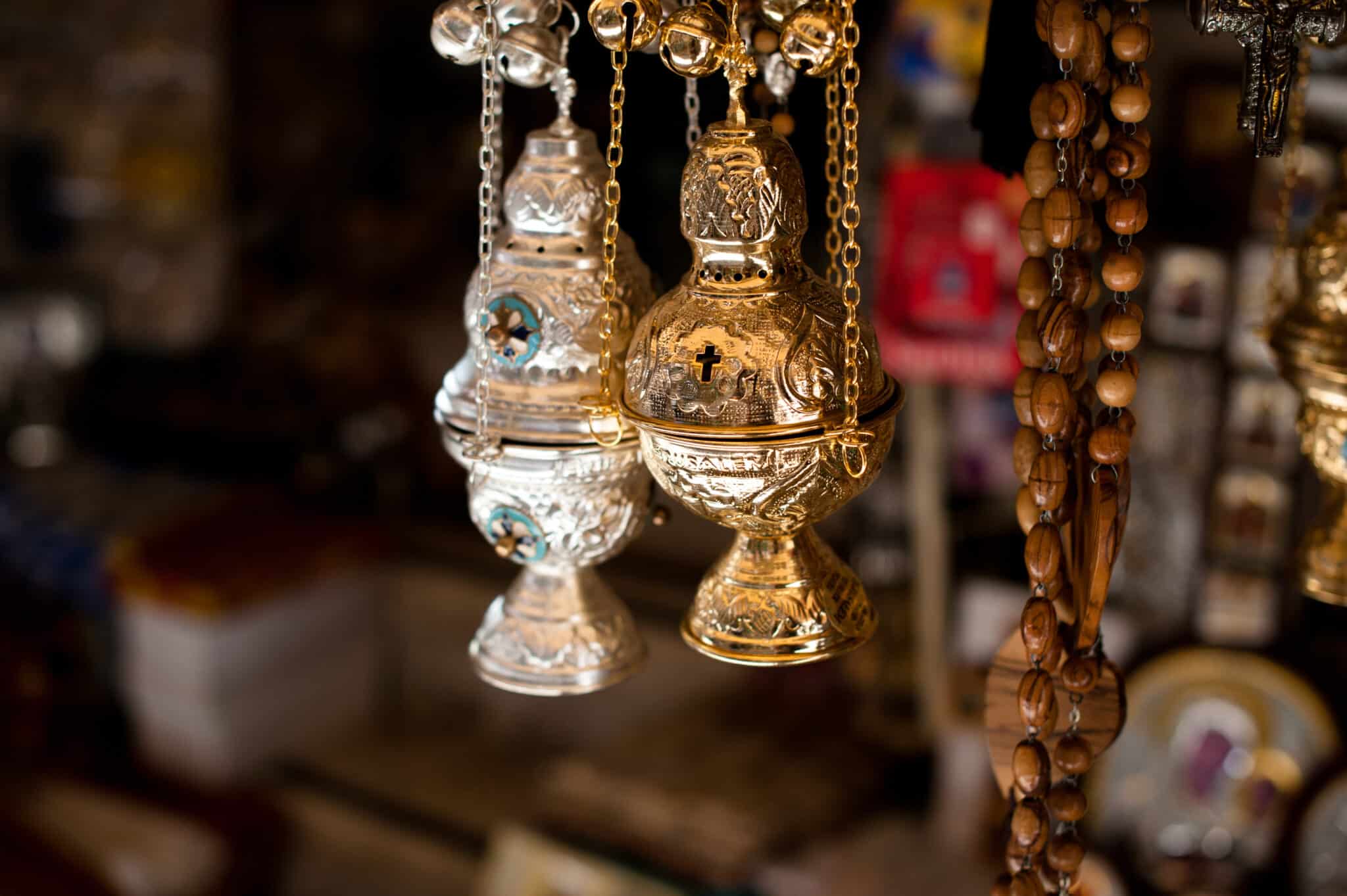Would you explain why the priest uses incense at Benediction of the Blessed Sacrament and other ceremonies?
The use of incense goes far back in time. The reference books tell us that incense was in common use in Near East countries, burnt for its perfume. Are they suggesting incense was an ancient kind of air freshener? From a secular use it passed into religious service. Pagans employed it in worship of their gods. According to one source, at a fete in honor of Baal the Babylonians burned 1,000 talents of frankincense. Incense also played a part in honor given to kings and the Roman emperor.
And among the gifts of the Magi was frankincense—a gift worthy of a king. Illustrations of altars of incense can be found in the St. Joseph edition of the New American Bible.
Already in the Book of Exodus there is reference to incense. In Chapter 30, Moses is told to make an altar of acacia wood for the burning of incense and Aaron is to burn incense morning and evening. Also, in Exodus 30:34-38 Moses is given a formula for incense to be used solely in the worship of Yahweh. It is to be made of equal parts of storax, onycha, galbanum and frankincense, blended and ground into fine dust. The incense is to be placed before the Commandments in the meeting tent. Elsewhere in the Old Testament incense was often burnt in connection with the burnt offerings of animals.
The sweet smell of incense and its rising smoke gave it a kind of natural symbolism. It became the image of something pleasing to God. The rising smoke came to symbolize a person’s or people’s prayers rising up to God. So in Psalm 141 we have the plea, “Let my prayer come like incense before you.”
Early Christians also found symbolic meaning in the use of incense. In the Book of Revelation, for instance, John has a vision of heaven and a kind of heavenly liturgy where the 24 elders worship the lamb that was slain. The elders hold harps and gold bowls filled with incense, “which are the prayers of the holy ones” (5:8). In Revelation 8:3-4 an angel holding a gold censer is given a great quantity of incense to offer and the smoke of the incense goes up before God with prayers.
So, among Christians today, incense has ritual and symbolic meaning. Its sweet aroma symbolizes something pleasing and acceptable being offered to God.
Burning incense is also a sign of reverence and dedication. Incensing the body at a funeral Mass is a sign of reverence for the body that was once the temple of God. In a more solemn liturgy, incensing the Book of Gospels indicates reverence for the word of God and Christ himself who is the Word Incarnate. Incensing the altar shows respect for Christ whom the altar represents and his sacrifice made present upon the altar. Incensing the Easter candle is, again, a sign of reverence for Christ who is the light of the world. Incensing the Blessed Sacrament at Benediction is a sign of adoration and worship given to Christ, truly present upon the altar. It becomes a sign of our prayers rising to heaven.


